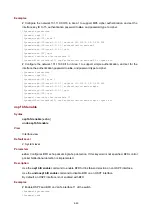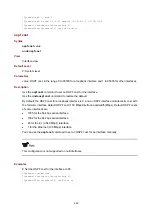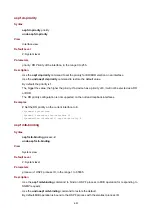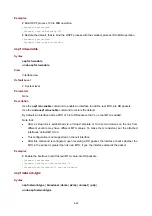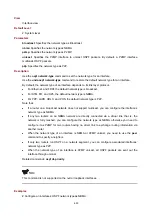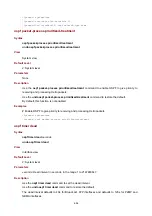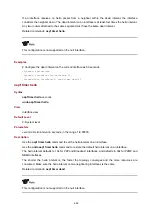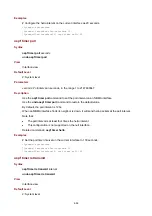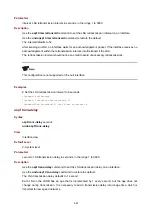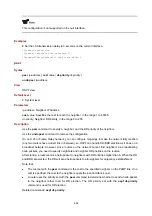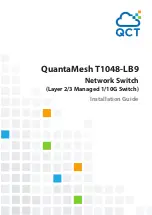
4-46
View
OSPF area view
Default Level
2: System level
Parameters
default-route-advertise
: Usable on an NSSA ABR or an ASBR only. If it is configured on an NSSA
ABR, the ABR generates a default route in a Type-7 LSA into the NSSA regardless of whether the
default route is available. If it is configured on an ASBR, only a default route is available on the ASBR
can it generates the default route in a Type-7 LSA into the attached area.
no-import-route
: Usable only on an NSSA ABR that is also the ASBR of the OSPF routing domain to
disable redistributing routes in Type7 LSAs into the NSSA area, making sure that routes can be
redistributed correctly.
no-summary
: Usable only on an NSSA ABR to advertise only a default route in a Type-3 summary
LSA into the NSSA area. In this way, all the other summary LSAs are not advertised into the area.
Such an area is known as an NSSA totally stub area.
translate-always
: Specifies the NSSA ABR as a translator to translate Type-7 LSAs to Type-5 LSAs.
translator-stability-interval value
: Specifies the stability interval of the translator, that is, the interval
during which the translator can maintain its translating capability after a device with a higher priority
becomes a new translator. The
value
argument is the stability interval in seconds, which is in the range
of 0 to 900 and defaults to 0 (that is, the translator does not maintain its translating capability if a new
translator arises).
Description
Use the
nssa
command to configure the current area as an NSSA area.
Use the
undo nssa
command to restore the default.
By default, no NSSA area is configured.
All routers attached to an NSSA area must be configured with the
nssa
command in area view.
Related commands:
default-cost
.
Examples
# Configure Area 1 as an NSSA area.
<Sysname> system-view
[Sysname] ospf 100
[Sysname-ospf-100] area 1
[Sysname-ospf-100-area-0.0.0.1] nssa
opaque-capability enable
Syntax
opaque-capability enable
undo opaque-capability
View
OSPF view


















